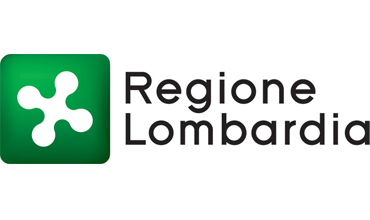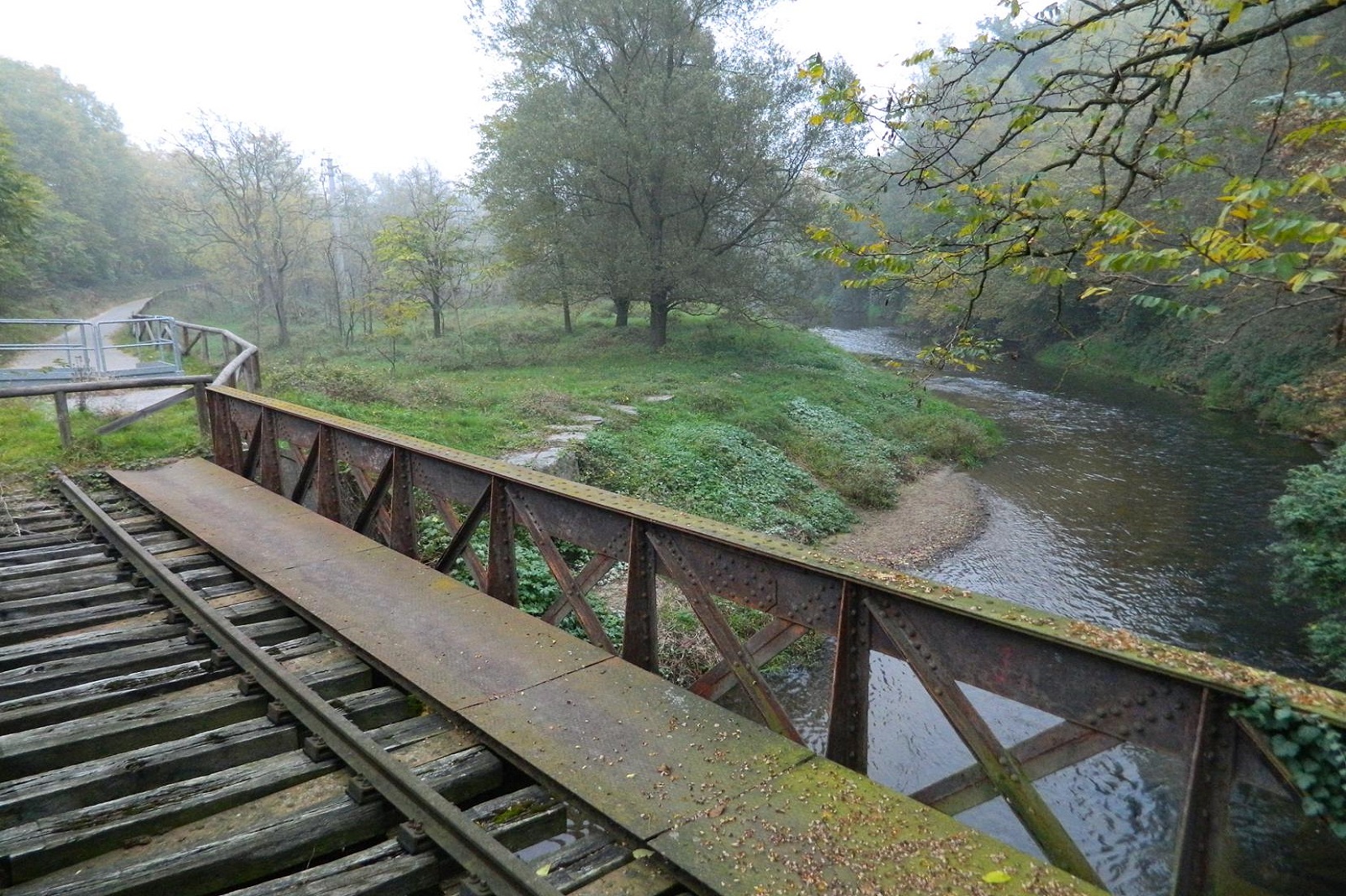If you want to follow an ancient Roman-Lombard route, rich in historical and religious testimonies, we suggest you to discover the Via Francisca del Lucomagno: the route, about 510 km, crosses Switzerland from north to south, passing from the Lucomagno pass, enters in Lombardy and reaches Pavia, where it connects with the Via Francigena
We will focus in particular on three Lombard stages that certainly deserve a visit and for which we have verified accessibility: the Badia di San Gemolo in Ganna and two places declared World Heritage Site by UNESCO: the Sacro Monte di Varese and the Castrum of Castelseprio.
The journey enters the Italian territory at Lavena Ponte Tresa, where its Lombard stretch begins. From here, along the cycle-pedestrian trail (where the old tramway, in the first half of the twentieth century, used to connect Ponte Tresa to Varese) there are still some Art Nouveau stations and after walking among streams, waterfalls and mills you reach the Argentera Park. We then pass Ghirla, where there is an ancient Maglio, that is a large machine used to work iron. From there, you cross the natural oasis of the lake of Ghirla and reach Ganna, where there is the Badia di San Gemolo.
Badia di San Gemolo, Ganna (Va)
A stop that cannot be missed during this journey, for its beauty and for the role it has had over the centuries, is the ancient Badia di san Gemolo. Located in a territory of intersection of several valleys, during the Middle Ages it was an important crosspoint, a resting place for pilgrims and the centre of relationships and communication between the world of upper Lombardy, the nearby region of Ticino and, beyond this, the regions of Central Europe. This involved the care of roads, bridges, rest stops and all activities related to the passage of pilgrims and traders. To these occupations, the Benedictine monks of S. Gemolo, like their confreres of the Chiaravalle Abbey, reclaimed the surrounding territory: they made all works of rehabilitation of the local marshes, thanks to a system of channels that conveyed the waters in the current lake of Ganna, and the cultivation of the wooded land and the new land obtained from land reclamation.
The Badia is composed of architectural elements with different functions, added in successive historical periods: the church, the bell tower, the cloister, the guest rooms and the surrounding monks' houses.
The original core is the Romanesque church, which houses the remains of the martyr Gemolo who, according to tradition, was killed in Ganna around the year 1000. The church can be dated back to around 1100 and was consecrated in 1160. Theil Bell tower (Romanesque style) dates back to the period when the church was consecrated.
Over time, as you can read in the website dedicated to the abbey, the church has undergone some changes such as the addition of the side chapels at the end of the 16th century and the reconstruction of the apse in the early 1600s. Inside the church, under the high altar, are the relics of San Gemolo.
The cloister, unusual for its pentagonal shape, was built in two successive moments that can be recognized for the shape of the arches: the 3 sides in Gothic style, with pointed arches, are from the first half of 1300; on the other hand, the other two sides were built in the seventeenth-century and are characterized by full-arched arches.
The guesthouse, with its Gothic cloister, dates back to the second half of the 15th century and is currently used as the parish hall. The monastic dwellings, which face the valley, were built in various stages between the 12th and the 16th century. The Badia is managed by the Friends of the Badia di San Gemolo Association in Ganna, which has been dealing for over thirty years with the recovery and enhancement of the ancient monument and the promotion of cultural events.
Here you can find information on accessibility.
From the Badia, following the provincial road connecting Ganna to Brinzio, you reach a small rural village, where an interesting Museum of Peasant Civilization is.
After passing through the village of Rasa, a small hamlet 7 km from Varese, at the entrance to Valcuvia, you reach the "Vellone" station of the funicular, at the base of the Viale delle Cappelle, a seventeenth century route leading to the Sacro Monte of Varese, a UNESCO World Heritage site since 2003.
Sacro Monte of Varese
Those who, starting from Viale delle Cappelle, walk along the Sacro Monte of Varese on foot can admire the fourteen chapels that accompany the pilgrim during the ascent; the chapels are works of exceptional architectural, sculptural and pictorial beauty, all dedicated to the mysteries of the rosary and realized around 1600, on a project by the architect Giuseppe Bernascone. A 2 km long uphill path leads to the ancient medieval village and from there to the Sanctuary of Santa Maria del Monte. For those who do not want to follow the route, that is not recommended for people with motor impairment because of the slope and the sometimes uneven ground, a pleasant alternative is represented by the cable railway
At the end of the road, we recommend a short stop at the panoramic terrace of the Moses, from which you can enjoy a wonderful panorama. Once in the medieval village of Santa Maria del Monte, you can walk the ancient streets and visit the Baroffio Museum, with small collections of Romanesque sculptures, illuminated manuscripts and paintings and the Pogliaghi Museum, housed in the former house of the Milanese artist, where you can admire a remarkable collection of Greek, Roman and oriental artefacts, creations made by the artist including the preparatory plaster of the central door of the Milan Cathedral, life size.
The sanctuary of Santa Maria del Monte
Built starting from 1100 on a pre-existing church, the Sanctuary has undergone many changes over the years, until the end of the nineteenth century. The interior of the sanctuary and the crypt of the Basilica of Santa Maria del Monte, restored and open to the public with the wonderful fourteenth-century frescoes, are worth a visit. Next to the Sanctuary stands the Monastero delle Romite Ambrosiane, founded by Caterina da Pallanza and Giuliana Puricelli, that was officially built in 1474 thanks to the bull of Pope Sixtus IV that granted permission to the foundation, according to the rule of St. Augustine and the constitution of the ancient Order of St. Ambrogio ad Nemus.
For information on the accessibility of the Sacred Mount, please click on this link.
The route continues downhill towards Varese and then goes up, near the lake, towards Gazzada, Schianno, Morazzone. At Caronno Corbellaro, the terracing of the Olona river allows you to enjoy a splendid view of the Alps and the Plain. From there you reach the village of Castiglione Olona, with the Palazzo Branda, the Collegiate and the Baptistery which preserves the splendid pictorial cycles frescoed by Masolino da Panicale, Vecchietta and Paolo Schiavo.
Castrum of Castelseprio and Torba Monastery
A few kilometres away there is the Castrum of Castelseprio one of the most significant medieval witnesses in Northern Italy, a UNESCO World Heritage site since June 2011. (For information on the accessibility of the Castrum, please click here)
It includes the complex of the Torba Monastery that, in the Lombard age, was a convent of Benedictine nuns and the oratory of Santa Maria "foris portas”, erected between the seventh and ninth centuries.
For information on the accessibility of the Torba Monastery, please click here
Within the defence walls stands the early Christian complex of St. John, formed by a basilica and a baptistery, with a cistern with a well. The bell tower was created by using one of the three watch towers. Nearby is also the Romanesque church of S. Paolo. Among the residential buildings there are private houses of various ages, and the residences used by the canons till the XVI century.
From Castelseprio, the route continues along the cycle path of the Olona Valley using the railway tracks of the Valmorea Railway, abandoned in the '70s of the last century, which linked important industrial sites, that are mostly no longer active, along the Olona river between Castellanza and Mendrisio (Switzerland - Cantone Ticino). With a short detour, you can also visit the Monastery of Santa Maria Assunta in Cairate, dating back to the first half of the eighth century, which is one of the first monastic settlements in Lombardy. In Castellanza you cross the green oasis of the Alto Milanese Park, until you reach Castelletto di Cuggiono, where the path goes towards Pavia to join the Via Francigena.
This last stretch is characterized by a typically flat landscape, crossed by the Naviglio, with woods, agricultural fields and the typical fauna of the Ticino Park, villages rich in parks and villas such as Cuggiono, Robecco sul Naviglio, Cassinetta di Lugagnano, Torre d'Isola, and villages with castles like Abbiategrasso and Bereguardo, and abbeys, among which the Abbey of Morimondo
Before leaving
More information about the route can be found in the InLombardia website
At this link you can download maps concerning the Lombard route, divided into 9 stages from Lavena Ponte Tresa to Pavia.
"Project carried out under the General program of intervention of the Lombardy Region, funded by the Ministry of Economic Development - 2015 Allocation".

